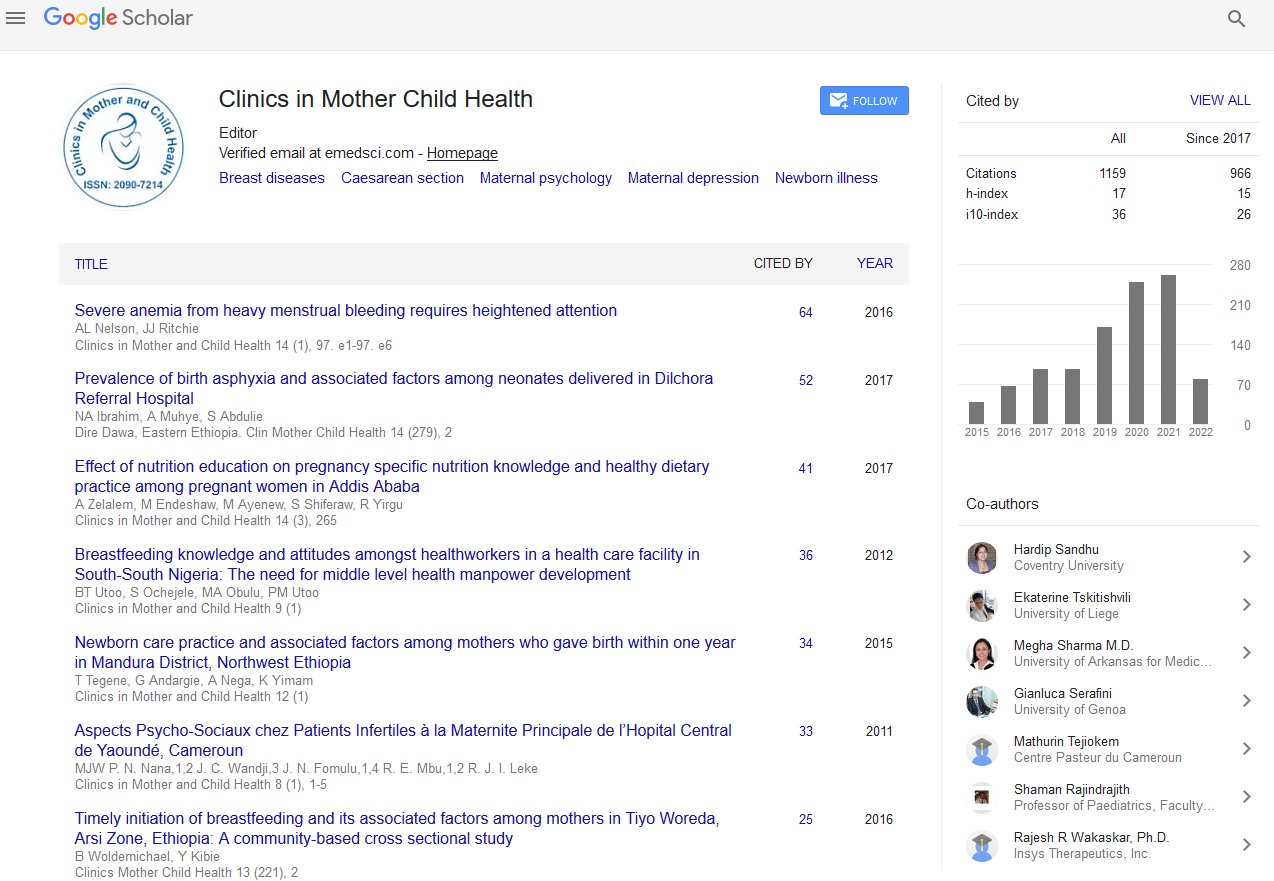Indexed In
- Genamics JournalSeek
- RefSeek
- Hamdard University
- EBSCO A-Z
- Publons
- Geneva Foundation for Medical Education and Research
- Euro Pub
- Google Scholar
Useful Links
Share This Page
Journal Flyer

Open Access Journals
- Agri and Aquaculture
- Biochemistry
- Bioinformatics & Systems Biology
- Business & Management
- Chemistry
- Clinical Sciences
- Engineering
- Food & Nutrition
- General Science
- Genetics & Molecular Biology
- Immunology & Microbiology
- Medical Sciences
- Neuroscience & Psychology
- Nursing & Health Care
- Pharmaceutical Sciences
Abstract
Pregnancy Outcomes of Reduced Fetal Movement and its Determinant Factors: A Case Control Study
Habtamu Gebrehana Belay*, Animut Tagele Tamiru and Abenezer Melkie Semahagn*
Background: Maternal perception of fetal movements is a self-screening method for assessing fetal well-being. There was limited evidence on pregnancy outcomes of reduced fetal movement in Ethiopia.
Objectives: The aim of this study was to assess pregnancy outcome of reduced fetal movement and its determinant factors.
Methods: Unmatched case control study design was conducted. All mothers were recruited from delivery ward in Injibara General Hospital, from 1st February to May 30th 2019. Cases were mothers who were presented with reduced fetal movement and controls were mothers who were not perceived reduced fetal movement. Bivariate and multivariate logistic regressions model were fitted to identify factors associated with reduced fetal movement. An adjusted odds ratio with 95 % confidence interval (CI) was computed to determine the level of significant.
Results: A total of 285 participants (95 cases and 190 controls) were included giving for a response rate of 100%. Impending preterm labor [AOR: 3.18, 95% CI :(1.48-6.84)], preeclampsia /eclampsia [AOR: 5.98, 95%CI : ( 2.99-11.99)], oligohaydraminous [AOR: 4.13, 95%CI: (1.64-10.44)], post term pregnancy [AOR: 5.61, 95%CI: (2.59-12.14)] increases the risk of reduced fetal movement.
Conclusion : Women presenting with reduced fetal movement are at increased risk of poor pregnancy outcomes including still birth, preterm birth, low appearance, pulse, grimace, activity and respiration (APGAR) score and increased rate of cesarean section .Impending preterm labor, preeclampsia /eclampsia, oligohaydraminous and post term pregnancy are the predicting factors for reduced fetal movement. Closely follow up and immediate intervention needed to reduced adverse birth outcomes related with decrease fetal movement.
Published Date: 2020-07-22; Received Date: 2020-06-20


